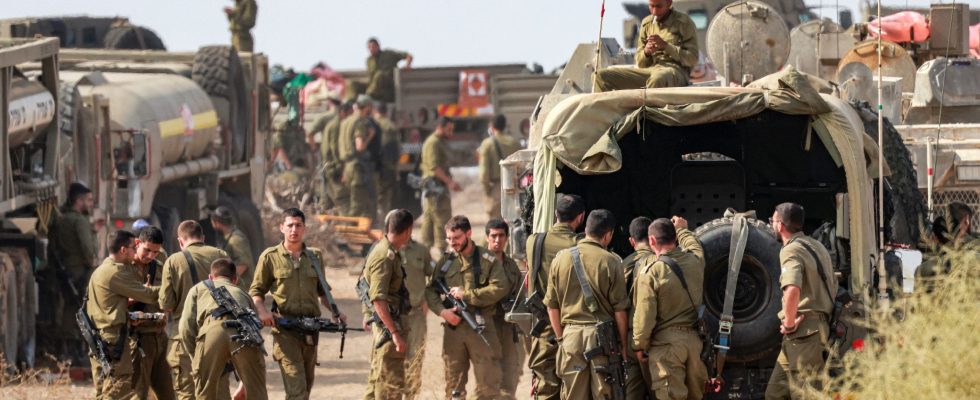Will the intense shelling of the Gaza Strip from the air give way to a ground operation? As nearly 300,000 IDF troops mass on the border of the Palestinian enclave, all signals seem to indicate that the Israeli army is preparing to launch a ground assault to “crush and destroy” Hamas, according to the words from Israeli Prime Minister Benjamin Netanyahu. In a statement released at dawn on Friday, October 13, Israel called within 24 hours “the evacuation of all civilians in Gaza City from their homes to the south, for their own safety and protection.” Request immediately rejected by Hamas.
Since its withdrawal from the Gaza Strip in 2005, Israel has intervened on the ground twice, in 2009 and 2014, for 15 and 19 days respectively. This time, the operation could last much longer. “It seems clear that the Israeli army will want to go much further than what has been undertaken in the past, gauges Hugh Lovatt, Middle East specialist at the European Council on Foreign Relations. Today the goal stated by the authorities is to completely eradicate Hamas from Gaza, which will require a much broader and deeper military operation.” This mission, if confirmed, would involve some of the most difficult combat that an armed force can encounter.
Environment conducive to ambushes
Gaza – one of the most densely populated areas in the world, where 2.3 million people live on a strip of land 41 kilometers long and 6 to 12 wide – is made up of a maze of equally winding streets than tangled. “Tanks are not capable of rushing into them,” points out Amélie Férey, coordinator of the defense research laboratory at the Ifri security studies center. It is therefore necessary to send small infantry detachments aboard tanks. light vehicles, or on foot, to advance. This exposes them to enemy fire, and in particular to snipers.”
In addition to this environment conducive to ambushes and surprise attacks, there are hundreds of kilometers of tunnels dug by Hamas for years to serve as a command center and weapons caches sheltered from Israeli strikes. This large underground network, nicknamed the “Gaza Metro” by the IDF forces, can also be used to shelter fighters, who can move without fear of being spotted, as well as batteries of rocket launchers, capable of going back to the surface thanks to a trap system.
Civilian and military losses
For the IDF forces, the risk is to find themselves confronted with a most deadly urban guerrilla war. An environment described as “abrasive” in the armies, for its propensity to wear out soldiers. “Urban combat is demanding, everything is more difficult: the uneven terrain punctures your tires, you are blocked by ruins, and the engagements take place at shorter distances, which increases your losses,” lists a military source. In the middle of this type, the advantage is with the defender, who can take advantage of all the constraints of this environment against the attacker.” Progression in the area also takes more time, to thwart traps and improvised explosive devices, which can dot streets and buildings, and require patient mine clearance work.
Beyond the Israeli forces, there is also the question of civilian losses among a Palestinian population who – despite calls from the Israeli army to evacuate the area – will find themselves at the heart of the fighting. By 2009, more than 900 of them had lost their lives, according to the Palestinian Center for Human Rights. In 2014, this figure rose to 1,660 victims according to the same source. A long-term occupation of the Palestinian enclave could result in an even heavier toll. “If the objective is to destroy Hamas, it will be difficult to escape a reoccupation, at least partial, of the territory, notes Amélie Férey. But when you do not have the population with you, it is almost impossible to pacify totally a zone.”
The risk of getting bogged down is even greater. “The question is: at what cost in terms of human lives, but also political resources, will a long-term occupation be possible,” adds Hugh Lovatt. As we saw with the American occupation of Iraq or Afghanistan, modern armies can win a military victory, but can they win peace?
